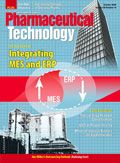Trends: NAS Launches and NME Approvals Rise and Fall
A recent report shows a decline in NASs and a rise in NME applications in 2007.
Companies launched 25 new active substances (NAS) in 2007, a decline of 19% from the previous year, according to an August report from Parexel International. The consulting firm's US Drug Approval Trends and Yearbook 2008–2009 also reveals that only 16 new molecular entities (NMEs) were approved in the US during 2007. Yet the number of US-marketing applications filed for NMEs rose to 28 in 2007, a 33% increase from 2006.

(SHAKIROV/GETTY IMAGES)
"NME and NAS approvals are key measures of new-drug productivity in the biopharmaceutical industry, and these measures tend to improve based on the volume of new-drug submissions," said Mark Mathieu, director of publications at Parexel, in a press release. He called the recent increase in the number of NME submissions an encouraging sign.
In the press release, Mathieu also said Parexel's analysis shows that "record percentages of drug-marketing applications that the US Food and Drug Administration has designated as priority submissions are going straight to approval in the first review cycle."
Among the NMEs that FDA approved in 2007 were Novartis's (Basel) hypertension drug "Tekturna," GlaxoSmithKline's (London) breast-cancer treatment "Tykerb," and Merck's (Whitehouse Station, NJ) HIV treatment "Isentress."
